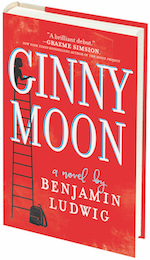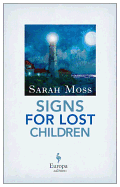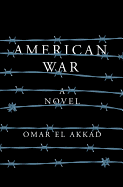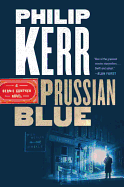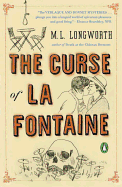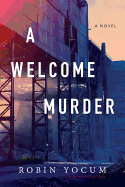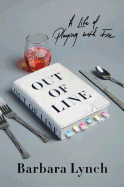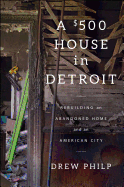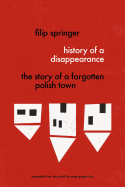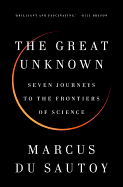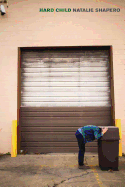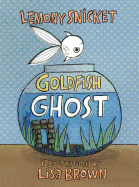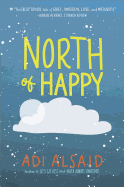 |
| photo: Perry Smith |
A lifelong teacher of English and writing, Benjamin Ludwig lives in New Hampshire with his family. He holds an MAT in English education and an MFA in writing. Shortly after he and his wife married, they became foster parents and adopted an autistic teenager. Ginny Moon is Ludwig's first novel--and the first title from the new Park Row Books imprint--and was inspired in part by his conversations with other parents at Special Olympics basketball practices.
In the acknowledgements for Ginny Moon you thank a professor who advised you not to teach. Why did you ignore his advice?
Because I love stories. Most people don't get to hear or tell new stories unless they're around other people. In a school--especially if you're teaching English or language arts--you're surrounded by stories all day. You hear them in the hallway, you read them with students. You listen to stories and tell them as you teach.
Which came first, the desire to teach or to write?
The desire to write, no question about it. I wrote stories in spiralbound notebooks all through school, and passed them to friends in the hallway so they could read them during study hall. It was pretty much impossible not to fall in love with literature, when you're writing all the time. Plus I saw that all of my teachers were storytellers, oral storytellers. I loved being in class to hear them talk. I knew that as a writer I'd have to make a living, and the only thing I wanted to do was to tell stories. What better job is there for a writer than being an English teacher?
And how did your writing evolve from those stories in school to Ginny Moon?
I used to be concerned with symbol and meaning, with imparting a lesson. So many of the stories I read as a kid seemed lesson-based. Religious stories, myths, fables--all of them have a message to impart. I read a lot of fantasy, too, and a lot of fantasy is about archetypes. So my early stories were focused on teaching lessons or conveying ideas. It was incredibly freeing to get beyond that stage. It happened at some point in high school, when I read Tolkien's letter to readers at the beginning of The Fellowship of the Ring. He explains that he "detests allegory," and goes on to explain why he prefers history instead. I didn't love history, but I saw his point. I got the idea in my head that when I write fiction, I don't have to judge everything, or even explain a lot of behavior. I just have to tell what happened.
If you could go back and visit your school-aged self, what would you tell that younger you?
I'd have to probably say something like, "Hey, you're going to have to write some awful, awful books before you can write a good one. And that's okay." I wrote at least 10 novels before Ginny Moon. All of them are on my computer, and almost all of them are completely unreadable. But every single one of them was essential. I learned how to write through writing those books. And I love them for that, even though the writing is bad and the storytelling is pretty shoddy. Writing a lot of unpublishable books was part of the learning process for me.
What's one thing you know now that you wish you had known for your first novel?
I wish I'd known how to trust the creative process. I didn't know how to do that at first. I didn't believe that ideas came from some shapeless, mysterious place. I thought you had to actively build the whole story, consciously. And that's just not true. Yes, there's a lot of conscious plotting and structuring, but a huge portion of writing a book is going into this dark, liquid place where ideas come from. I do, anyway.
You have personal experience that inspired Ginny Moon.
I couldn't have written Ginny Moon if I hadn't become a foster parent and adopted a special-needs teenager. But it wasn't really my experience that made the book come together. It was Ginny's voice. It drove the story. Ginny's voice is based on a combination of voices that I heard at Special Olympics basketball games, and from my experience teaching school. Once her voice was in place, the plot came together quickly. I'd ask myself, why does she emphasize that particular word? Or what is it that's really bothering her when she picks at her fingers? The answers to those questions, and others like them, composed the backstory, as well as a lot of the points of conflict.
In a previous interview you mentioned that autism doesn't have a strict set of characteristics. So how did you go about deciding what would define Ginny?
People with autism are individuals, and really can't be lumped together in terms of behaviors that they exhibit. So when it came to deciding how Ginny would function in the world--how she would navigate through it, really--I worked backwards, using her voice as a starting point. I really believe that the way a person talks is sort of like a story unto itself. If you listen to it, and get past all your assumptions, you begin to see what the person has been through and where she's headed.
Did you find that voice a challenge, given the tendency of those with autism to internalize so much?
At first, because Ginny's voice came to me so forcefully, I almost couldn't keep up with her narration. Then, later, when I went back to work with the raw material, there was a lot that wasn't working. I had to find a way for Ginny to move between the quiet exterior that she presents to other people and the intensely verbal thoughts she keeps to herself. Not everyone thinks in words, but I was writing a novel, so words were all I could use. In the end I said: this is a story, not real life, so I'm just going to do the best I can to imitate in words what a not-so-wordy person might think.
Her voice is powerful in making this novel so charming.
I'm glad you found it charming! There's a lot of humor in Ginny's voice, but I hope readers can sense how torn she is. Ginny's circular and repetitive thinking is a product of her obsessiveness. I don't mean she's obsessive in an unreasonable way. After all, this is a character who needs something desperately, and asks for it desperately, but no one understands her. The quirkiness of her voice comes from the errors in her understanding, the linguistic accidents that occur when she tries to say something and her words don't add up.
What advice do you have for readers who may be considering fostering or adopting and may encounter some of those problems the Moons did?
For people considering adoption: just do it. No matter how difficult adoption might seem, no matter how it might inconvenience your lifestyle--your worry and fear is nothing compared with the worry and fear that a child experiences as he or she waits for a Forever Family. Not to mention all the trauma they've been through. The same goes for refugees. We have to take them in. We aren't here to take care of only ourselves. We're here to take care of other people. We went through some really difficult times with our daughter, yes, but as an adoptive parent, you become part of someone's healing process. Then you become part of her walk towards independence.
And finally, what's in store for you now?
I want to teach so badly. I took a year off to support Ginny Moon, and though it's been great, it was really hard to not be with teachers and students all day. I'm eager to teach fiction at a college or university--I see it as the natural evolution of my career--but at the same time, I have some books that need to be written. I'm finishing up another novel, another really voice-y book that I call Both Ways. I hope to write some YA novels, and maybe some middle-grade, down the road. I'm sure we'll adopt another child at some point. But in the short term, I'm going to write and teach and keep on being a dad. Those three things are really all I know how to do. --Jen Forbus

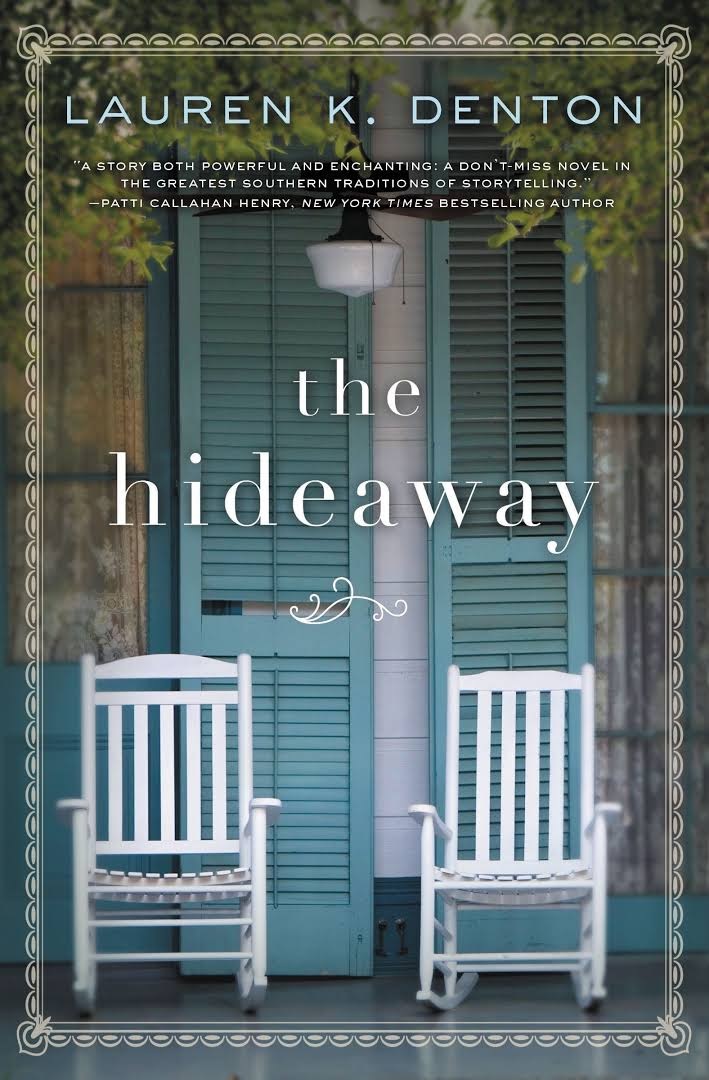 The definition of southern fiction has fluctuated over the years, but the major elements remain the same: the priority of family, the closeness of community, struggles over race, the abiding allure of religion. Even for those not born and raised in the South, these themes tend to resonate in some capacity, and often a deep one. Not all southern novels manage to squeeze in every theme--although some do--but I'd wager at least a couple of these elements are present in every piece of southern fiction ever written. Hearing the joys and struggles of other lives, especially lives that take place in this steamy cauldron of hope and hurt, helps us navigate our own.
The definition of southern fiction has fluctuated over the years, but the major elements remain the same: the priority of family, the closeness of community, struggles over race, the abiding allure of religion. Even for those not born and raised in the South, these themes tend to resonate in some capacity, and often a deep one. Not all southern novels manage to squeeze in every theme--although some do--but I'd wager at least a couple of these elements are present in every piece of southern fiction ever written. Hearing the joys and struggles of other lives, especially lives that take place in this steamy cauldron of hope and hurt, helps us navigate our own.


